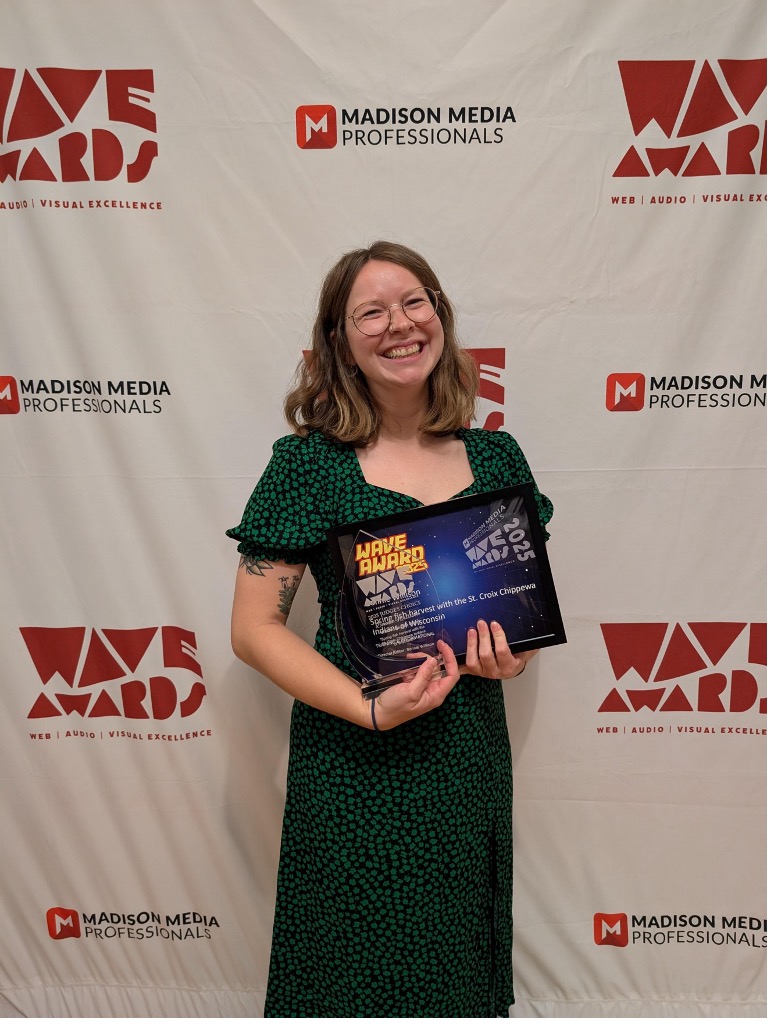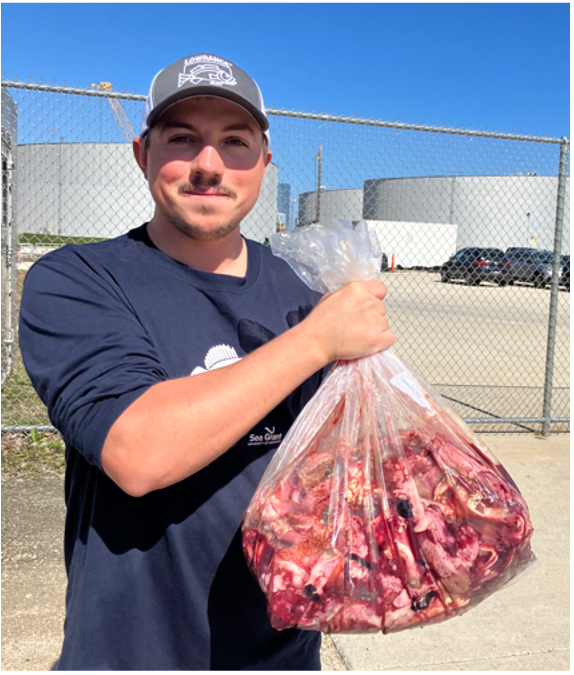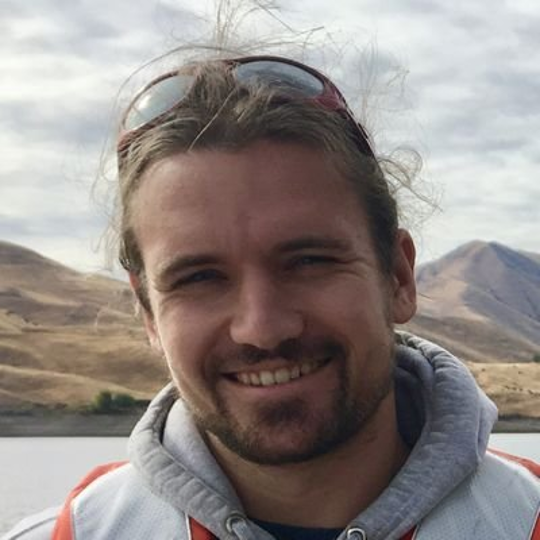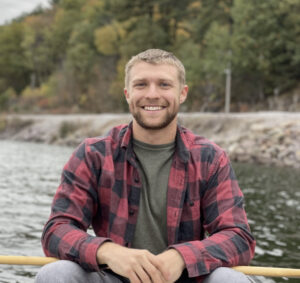
Mike Smale is assessing 38 wetlands in the Wisconsin part of the Lake Superior watershed to see what vulnerable plant and animal species are present. Submitted photo.
If Mike Smale were king of the world for a day, he might just decree that all city buses in Madison, Wisconsin, be outfitted with front racks to hold kayaks, in addition to bikes, as they are now. That way, a person could stow their kayak, climb onto the bus, ride to a nearby body of water, remove the kayak and have a paddle. This would be the convergence of two things Smale is passionate about – embracing mass transit to reduce emissions and enjoying water.
“I’m kind of a nerd in that way (supporting eco-friendly trains and buses) on top of being a water nerd,” Smale said.
While filling the role of the J. Philip Keillor Great Lakes – Wisconsin Sea Grant Fellow focused on climate change and coastal wetlands, Smale may not really don the royal mantle and order what’s affixed to buses, but he can embrace his love of water. He took on the 18-month fellowship based at the Wisconsin Department of Natural Resources (DNR) in Madison in mid-June and has a dual-focused appointment.
First, he is tackling what he calls “oddball” tasks, such as collaborating with people in the DNR’s Drinking Water and Groundwater Program, attending conferences and assisting with Sea Grant’s review process to determine a biennial research package. His second focus is assessing how climate change is affecting 38 wetlands in the Wisconsin portion of the Lake Superior watershed.
Smale said, “We are coming up with methods for a framework to evaluate the climate sensitivity of these wetlands. That involves finding out what data is available, working with experts to establish those methods, and how that framework could be representative of true climate sensitivity. And then some mapping (of the wetlands).” The end point will be a scoring table for the sites.
He is looking through the lens of four shifts expected to affect wetlands under a changing climate as identified by the 2021 Wisconsin Initiative on Climate Change Report:
- Warmer temperatures
- Increased precipitation
- Lake level fluctuations
- Increased lake wind and wave action
Those shifts are being incorporated into a whole-picture analysis of a wetland. Smale elaborated, “Based on communities that are present (in a wetland), we can estimate which wetlands are more or less likely to shift – which wetlands are going to change the most. We’re starting with vegetation, and we are going to move into looking at the climate sensitivity of fish habitat and birds, and also culturally important beings.”
With that data in hand, Smale and his team will next determine how, “Those components or communities will translate, or not translate, into adaptive capacity. We’re asking, ‘How well could these wetlands, even though they’re sensitive, how well could they cope with the change in climate’?”
Smale’s work can also inform assessments throughout the Great Lakes Basin because one source of data is the Coastal Wetland Monitoring Data Program, which includes insights about the region’s fish, frog, bird, macroinvertebrate and vegetation populations, along with water quality. The program is based at Central Michigan University and is supported by contributions from binational governmental agencies, universities and a private business.
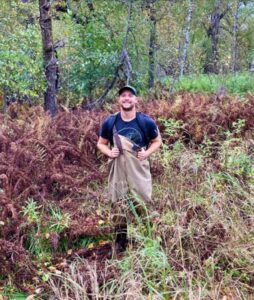
Smale said through the fellowship he has, “Learned that I like these actionable positions where you’re doing something that is having a visible effect on people’s lives. ” Submitted photo.
“We’re building the framework (in Wisconsin) to, at a very minimum, work with that dataset so it could be extrapolated to all the Great Lakes. We’re finding ways where we could include state data or from other sources to fill out gaps or make it a little bit more robust, more applicable, but other states could also use this data, tweak it to their own framework using their own data sources,” said Smale.
Speaking of tweaks, Smale said he’s so far encountered one in his own fellowship. “When I first started this position, it really seemed like I jumped into Sophie’s (his predecessor in the fellowship, Sophie LaFond Hudson) work. I thought ‘Oh, wow, this is halfway done. What am I going to be doing?’”
As he dug deeper, though, Smale realized he should adjust LaFond Hudson’s work in the aquatic invasive species (AIS) category – to view AIS as an indicator of stress in a wetland not as a community on par with, say, the state of fish and frogs. For example, if nonnative cattails are present, the wetland is near a tipping point toward a monoculture that should be reflected in an individual wetland’s resiliency score.
Adjusting that part of the framework, “Felt like I was regressing back in the project,” he said. “Here, I thought I was halfway done and actually I’m back working on the basics of the project. But after talking it through with Cherie Hagen, who’s my supervisor at the DNR, she’s like, ‘Oh no, this is exactly what you should be doing. You’re building it up more. You’re incorporating exactly the feedback you’re supposed to.’”
In light of this, Smale said, “I guess I was surprised at how much more influence I would have on this project and also kind of the depth that we are working on.”
In addition to the DNR’s Hagen, the Lake Superior basin supervisor in the Office of Great Waters, Smale is also mentored by Madeline Magee, monitoring and beach coordinator in that same DNR office; Sea Grant’s Associate Director Jennifer Hauxwell; and Titus Seilheimer, Sea Grant’s fisheries outreach specialist.



